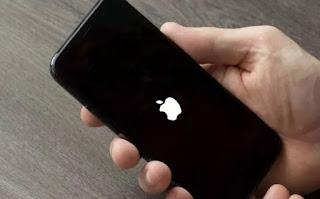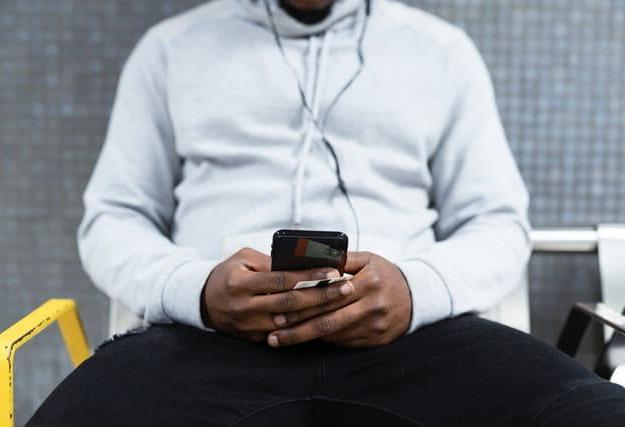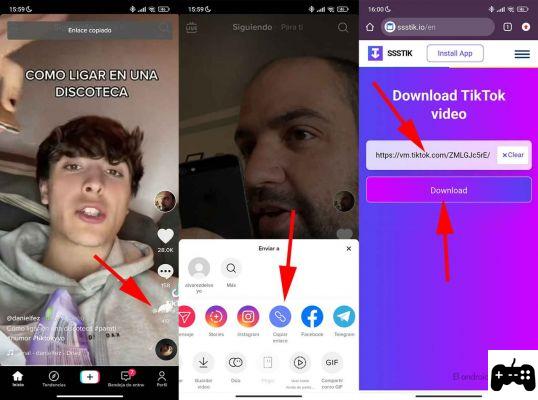How wireless headphones work
As I already mentioned in the opening bars of this guide, there are many wireless headphones available on the market, each with specific characteristics. Below you will list those to which, in my opinion, you need to pay more attention when choosing.
Wireless technology and range

As things currently stand, wireless headphones can be based on at least three different communication standards: Bluetooth, radio frequency (RF) and infrared.
- Bluetooth headphones - are the most widespread, as well as the most versatile. They have a range of up to 10 meters, can connect to most devices equipped with the same technology (smartphone, tablet, PC, TV and so on), without resorting to external receivers, and, thanks to the buttons and microphone of which they are usually equipped with, allow you to control audio playback and answer calls. Bluetooth headphones, however, compress the transmitted audio, although the difference in quality is practically unnoticeable on high-end devices. In some cases, they are equipped with NFC technology (which allows them to be paired with compatible devices through physical contact only) or, as in the case of some Bluetooth headphones produced by Apple and Beats, chip support Apple W1/W2: the latter allow you to pair them with iOS / iPadOS devices by pressing a button and automatically add them to all devices connected to the same Apple ID. Finally, some Bluetooth headphones are equipped with technology multipoint, which allows it to be used on two or more devices at the same time.
- Radio Frequency (RF) Headphones - offer a really long range (up to 100 meters) and good audio quality. However, these headphones require an external transmitter to work, which can be connected to compatible devices via a 3.5mm jack cable, and are prone to interference.
- Infrared (IR) headphones - particularly inexpensive, these headphones offer excellent audio performance but have a very limited range of action. Moreover, they are compatible only with devices equipped with the same port (or prepared for the connection of an external IR transmitter). They are also subject to interference.
Audio channels

As for the sound performance, the first parameter to consider is the number of audio channels supported by each earphone. Headphones stereo, for example, they support two audio channels and are equipped with two speakers (one for each ear).
Headphones 5.1 e 7.1, as you can imagine, they support 5 and 7 audio channels respectively, plus one for bass performance. Channels can be Really o virtual: headphones with real channels have four or five speakers per ear, while those with virtual channels have only one speaker per ear and the surround simulation is obtained at the software level.
As you can imagine, stereo headphones (generally less expensive) are suitable for any type of use, including listening to music; if, on the other hand, you are interested in using them for gaming or for watching movies and TV series, you can consider purchasing good quality 5.1 or 7.1 headphones (more expensive than the previous ones).
Size

Based on their format, headphones fall into two basic categories: headphones over-ear/around-ear (circumaurali), equipped with cushions that “surround” the ear and offer greater isolation from the external environment; and headphones on-ear (sovraurali), smaller in size than the previous ones and which rest directly on the ear cups.
Another distinction to be made is between closed, semi-open and open headphones: the closed headphones they guarantee a high level of acoustic insulation (since they do not let outside noise pass through); the open headphonesinstead, they are generally more comfortable but do not isolate the ear from surrounding sounds. Headphones half open, as it is easy to imagine, they propose to offer a good compromise between the two types seen above.
So, first of all, I advise you to choose headphones that adapt to the shape of your head, your ears, the degree of isolation you want to achieve but, above all, to your needs: for example, if you wear glasses, you should buy adjustable headphones, which do not push the splints of the glasses when you wear them.
Microphone and controls

As I already mentioned in the opening paragraph of this section, many Bluetooth headphones have microphone (which can be used to answer calls, to use video conferencing software and apps, or to interact with voice assistants) and commands, physical or touch, which allow you to control multimedia playback and / or listening volume.
In most cases, the controls work the same regardless of which device you connect the headphones to; however, some of them may only be usable on some devices.
Another important feature to keep in mind is the microphone's ability to isolate surrounding noises and to return clear and undistorted audio to those on the other side of the communication.
Sound quality and noise reduction

Another very important parameter that affects the operation of wireless headphones is the sound quality: depending on the headphones used, the reproduced sound may vary, even significantly (for example, some headphones may prefer bass, sacrificing mid frequencies). Technically, you have to pay particular attention to three specific parameters: acoustic pressure, impedance and frequency response.
- Sound pressure (or sensitivity) - it is a value measured in dB which specifically indicates the acoustic pressure expressed by the headphones in relation to the applied voltage (2,83 volts listening to 1 meter away). The higher the value, the more you can get loud sounds without getting distorted.
- Impedance - expressed in ohms (volts / ampere), it is a value that indicates the resistance exerted by the headphones on the audio signal. The higher the value, the better the audio quality, although excessively high values can affect the overall sound volume (which may become too low).
- Frequency response - measured in Hz, it is the range of frequencies that the headphones can cover. It is important to choose headphones that have a wide frequency response even for the lowest frequencies, considering that the human ear can perceive a range that goes from 20 to 20.000 Hz. Another important value is the gap, that is the number of decibels. within which the headphones are able to adequately cover the entire frequency range expressed, ensuring a sound faithful to the original: the lower the gap, the better.
Always speaking of sound rendering, there are other influential parameters to take into consideration and which I list below.
- Number and size of drivers - drivers are the internal components of the headphones that convert the electrical signal into sound waves. Headphones with large drivers typically reproduce bass faithfully, however this can negatively affect the weight of the headphones. Plus, multi-driver headphones deliver sound that's more faithful to the original.
- Hi-Res Audio and aptX support - if you particularly care about audio performance and listen to high quality music (from CD, vinyl or with almost no software compression), support for these two technologies could be important to you. Hi-Res Audio is a technology used to reproduce music at 24 bit / 96 kHz, therefore at a quality better than that of audio CDs (equal to 16 bit / 44,1 kHz). The aptX codec, on the other hand, allows you to play 24-bit music via Bluetooth.
- App support - some high-end Bluetooth headphones can be paired with apps for smartphones and tablets, officially released by the manufacturers of the headphones themselves, which allow you to manually adjust the sound equalization.
To further improve the sound performance, some models of wireless headphones are equipped with active technology for noise reduction, which uses the microphones integrated in the headphones to limit, or even eliminate, external noise: ideal for air travel.
Power supply and autonomy

As you can easily imagine, wireless headphones need an internal power source, although some models of Bluetooth headphones can also work with a cable (giving up advanced features such as active noise reduction, for example): in particular, headphones Bluetooth they are often powered by integrated rechargeable batteries (such as those used on smartphones, so to speak) and allow for autonomy of up to several tens of hours. In addition, some headphones of this type have systems of quick charging, which allow you to get several hours of autonomy in the face of a few minutes of charging.
The headphones a radio frequency and infraredinstead, they are generally powered by AA batteries or AAA, also rechargeable, and offer several hours of autonomy during playback.
How to use wireless headphones
Now that you have well understood the parameters that regulate the operation and audio performance of wireless headphones, the time has come to understand, in practice, how to use them on the most common devices, such as PCs, smartphones, tablets and televisions.
How wireless PC headphones work

Let's start from computer. If you have a pair of Bluetooth headphones and a PC compatible with the same technology, you can pair them in the "classic" way: first, turn on the headphones and bring them in pairing mode (generally, you have to hold down the power button for several seconds), then go to the Bluetooth section of the PC operating system (Start> Settings> Devices> Bluetooth and other devices> Add Bluetooth or other device su Windows, or System Preferences> Bluetooth su MacOS) and select the name headphones from the list of nearby devices. If your computer doesn't have Bluetooth connectivity, you can implement it via a USB adapter dedicated.
Vedi offers your AmazonIf, on the other hand, you have purchased a pair of headphones a radio frequency and infrared, you must first connect the external transmitter to the PC, in the dedicated input dedicated to the 3.5 mm jack (the "classic" headphone cable, so to speak). Once this is done, connect the receiver to the power supply, if applicable, turn on the headphones and, using the physical button or the lever on the same, proceed to connect them to the transmitter.
For more in-depth information on connecting wireless headphones to the computer, of whatever type they are, I refer you to reading the specific tutorial I dedicated to the topic.
How wireless cell phone headphones work

The operation of the wireless headphones on mobile phones and tablets it is very similar to the one seen previously: what you have to do, if you have Bluetooth headphones, is to put them in pairing mode, by pressing and holding the power button, then go to the section of the operating system dedicated to Bluetooth devices (Settings> Connected devices> Connection preferences> Bluetooth> Pair new device su Android, or Settings> Bluetooth su iOS / iPadOS) and select the name Bluetooth headphones from the list of nearby devices.
If you need more detailed information about the steps seen above, I suggest you refer to the specific guide I have dedicated to the topic.
Wait, you are telling me that you have purchased a pair of AirPods or Beats headphones and that, as a result, you are interested in understanding how iPhone wireless headphones work which have the Apple W1 / W2 chip? In that case, my guide on how to connect the AirPods may be useful, in which I have given you all the necessary information.
How wireless TV headphones work

The operation of the wireless headphones sui televisions it's not all that different from what we've seen in the previous sections of this chapter. So if you have a couple of Bluetooth headphones, first set them to pairing mode, by pressing and holding the power button.
Then, turn on the TV, go to the area of the operating system dedicated to Bluetooth devices (eg. All Settings> Audio> Audio Out> Bluetooth) and wait for your headphones to be detected by the TV. When that happens, select theirs name and press the button OK on the remote control to finalize the pairing. If your TV is not natively compatible with Bluetooth technology, you can use a Bluetooth transmitter, to be connected to the TV using the 3.5 mm jack cable.
If, on the other hand, you have RF or infrared headphones, connect the transmitter to the TV via the 3.5 mm jack, turn it on and, after having also turned on the headphones, connect them to the device by pressing the appropriate physical button / lever.
For more information, you can consult my guide on how to connect wireless headphones to the TV, in which I have explained to you, by wire and by sign, all the steps to take to establish the connection between the two devices.
Which wireless headphones to buy

Now that you have a clear understanding of the distinctive features of wireless headphones, it's time to get down to business and decide which purchase is best suited to your needs. Therefore, I invite you to consult the buying guide that I have created in this regard, or to choose a pair of headphones from those listed below, all worthy in terms of quality / price ratio.
See offer on Amazon See offer on Amazon How wireless headphones work

























